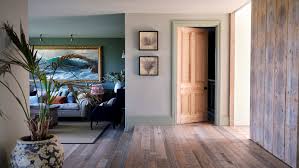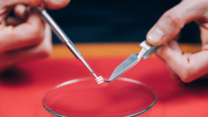
Skirting and Door Frames: The Ultimate Guide to Perfect Interior Finishes
When designing a beautiful home, most people focus on flooring, wall colours, and furniture — but the real secret to a perfect interior lies in the finer details. Skirtings and door frames might seem like small features, yet they play a huge role in defining your space’s character and overall finish. These elements don’t just serve a practical purpose; they bring balance, style, and sophistication to your home. This guide will walk you through everything you need to know about skirting and door frames and how they help achieve a flawless interior design.
Understanding Skirting and Its Purpose
Skirting, also known as skirting boards or baseboards, is installed at the bottom of your walls where they meet the floor. Its main purpose is to hide the joint between the wall and the floor while protecting the wall from scuffs, scratches, and dirt. But skirting is not only functional — it also adds a decorative border that enhances the overall look of your interior. From modern flat designs to classic moulded profiles, skirting boards complete the visual flow of a room and tie together all design elements.
The Role of Door Frames in Interior Design
Door frames are the structural and decorative casings that surround your doors. They help ensure stability and create a clean transition between rooms. Just like skirtings, door frames contribute to the overall aesthetic of a space. The right frame design can make your doors stand out or blend seamlessly with your walls. Pairing your door frames with matching architraves — the decorative mouldings around the door — adds the finishing touch that defines a well-designed interior.
Matching Skirting and Door Frames for a Cohesive Look
One of the key principles of interior design is consistency. Matching your skirting boards and door frames creates a cohesive, professional appearance throughout your home. When both elements share the same profile, thickness, and colour, the result is a balanced and continuous design. For modern homes, sleek and simple profiles painted in neutral tones like white or grey work beautifully. In traditional spaces, you might opt for ornate mouldings with natural wood finishes for a timeless charm.
Material Options: MDF, Wood, and More
When choosing skirting and door frames, the material you select affects both the look and durability of your finishes.
-
MDF (Medium-Density Fibreboard): The most popular choice for modern interiors. MDF is smooth, easy to paint, and resistant to warping or cracking. It offers excellent value for money and suits both contemporary and classic homes.
-
Solid Wood: Ideal for those who love natural finishes. Wood provides warmth and texture but requires more maintenance and can be prone to expansion due to humidity.
-
PVC or Vinyl: These are water-resistant options often used in kitchens and bathrooms. They’re durable and easy to clean, though less elegant than MDF or wood.
Among these, MDF skirtings and frames are the preferred choice for most homeowners due to their affordability, flexibility, and elegant finish.
Popular Styles and Profiles
Skirting and door frames come in a wide range of profiles, allowing you to choose styles that match your décor.
-
Square Edge: Minimalist and modern, perfect for contemporary spaces.
-
Chamfered Edge: Simple yet elegant, adding subtle definition.
-
Torus and Ogee: Traditional profiles with curves that add depth and detail.
Choosing the right profile can dramatically change the mood of a room, making it feel sleek and modern or richly traditional.
Finishing and Painting Tips
To achieve that “perfect finish,” proper painting and finishing are essential. Most MDF skirtings and frames come pre-primed, which makes painting easier. Use high-quality paint for a smooth, professional result. For a timeless look, white is always popular — it brightens rooms and complements any colour scheme. Alternatively, painting the trims in the same colour as your walls can create a seamless, spacious feel. Dark or bold colours can add contrast and make your interiors stand out with confidence.
Installation and Maintenance
Installing skirting boards and door frames is a task that can be done professionally or as a DIY project. The boards are usually fixed with adhesive or nails, and any visible gaps can be sealed with caulk for a polished look. Door frames require accurate measurement and leveling for a secure fit. Once installed, maintenance is easy — simply wipe with a damp cloth to remove dust and dirt. With minimal effort, your skirting and door frames will continue looking as good as new.
Adding the Finishing Touches
For a truly complete look, ensure all your trims, including skirtings, architraves, and door frames, share a unified style and finish. This attention to detail adds harmony and flow to your home. Small touches like rounded corners, matching paint finishes, or integrated lighting can further elevate the overall appeal.
Conclusion
Skirtings and door frames may seem like minor details, but they’re the foundation of a well-finished interior. They protect your walls, enhance your design, and create a sense of continuity that ties your rooms together. Whether you choose sleek MDF trims for a modern home or ornate wood frames for a traditional feel, these elements are key to achieving professional-quality results. Invest in high-quality materials, choose a consistent design, and pay attention to the finishing — and you’ll transform your home into a space that’s elegant, balanced, and truly complete.












Leave a Reply